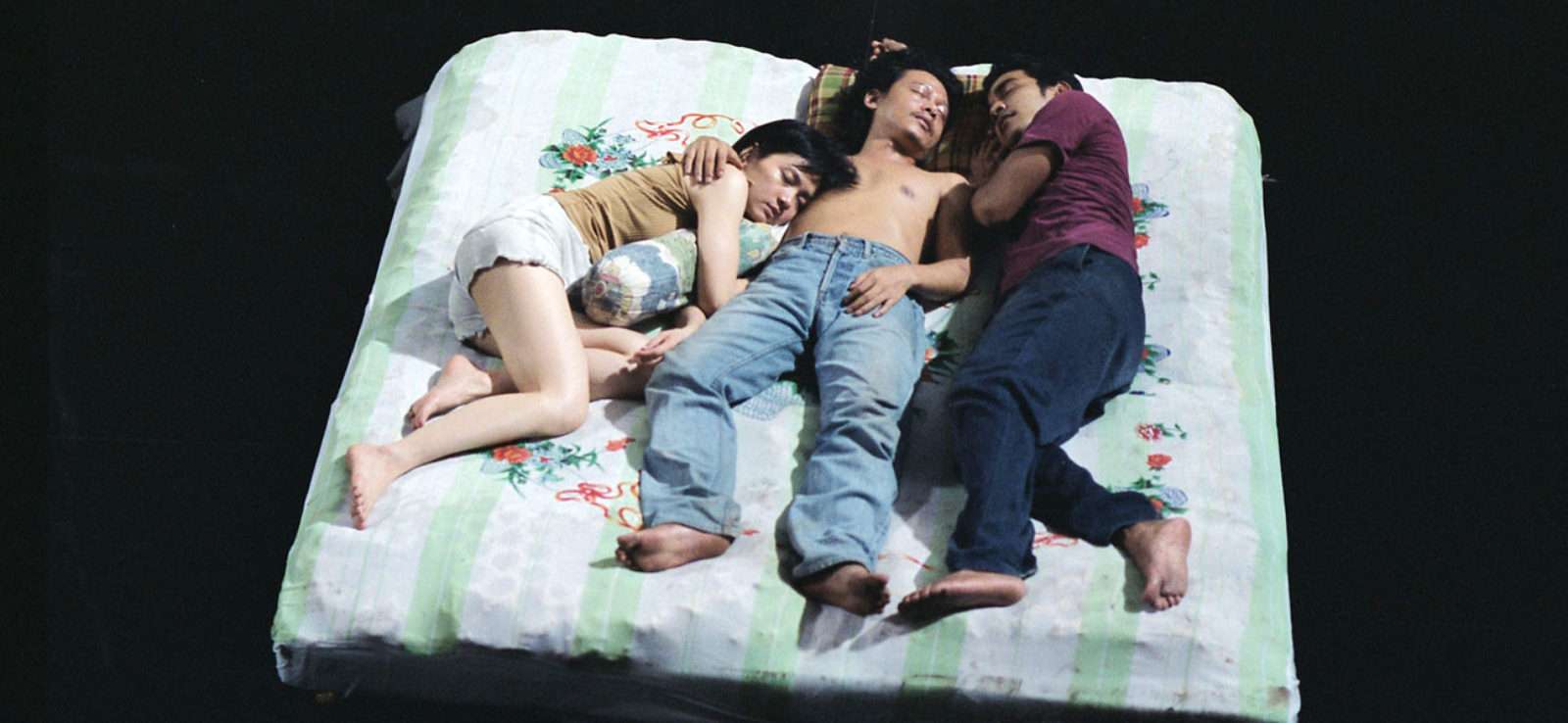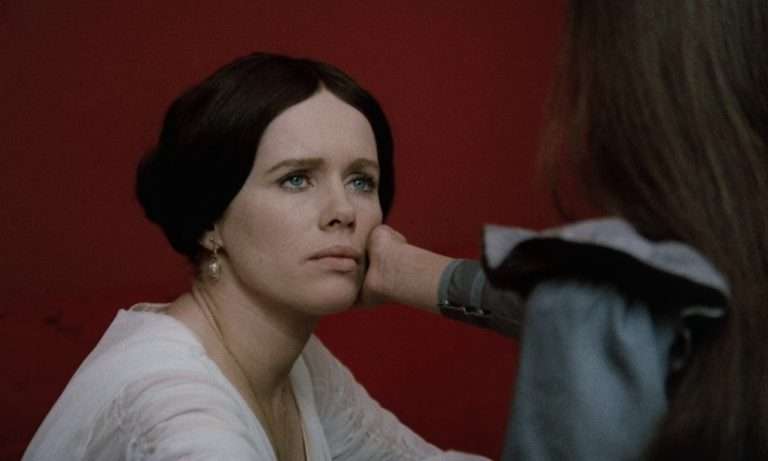Tsai Ming Liang Guide: As the 20th century drew to a close, cinema, like other art forms, was undergoing a metamorphosis. Hollywood, in a desperate attempt to keep audiences engaged, embraced new technological advancements, such as improved visual effects. It sought to captivate the masses by blurring the lines between reality and imagination, producing sci-fi blockbusters like “Terminator 2” (1991), “Jurassic Park” (1993), and “Armageddon” (1998). However, thousands of miles away from sunny Los Angeles, another group of filmmakers across Europe and Asia consciously took cinema in a different direction. Rather than helping audiences forget the fourth wall, they aimed to reinforce it, creating films that were acutely aware of their own impact, intentionally distancing viewers from the on-screen events by withholding the cut.
In contemporary film theory, this shift is referred to as ‘Slow Cinema.’ To an avid cinephile, it is now a fairly common term. Maestros like Béla Tarr, Pedro Costa, Roy Andersson, Theo Angelopoulos, and Aleksandr Sokurov made a significant impact during this period. Although ‘Slow Cinema’ can be traced as far back as the 1930s with Olexandr Dovzhenko’s “Earth,” and in the ’60s, ’70s, and ’80s with the works of Andrei Tarkovsky and Chantal Akerman, it was in the ’90s that it truly blossomed as an aesthetic trend. This was also the time when our hero, Tsai Ming Liang, began his foray into the world of feature films.
Tsai Ming Liang: An Essayist of Mortality
Tsai Ming Liang is not merely a director. His films are like essays, and temporality is his ink. Tsai’s work uncovers an intangible aspect of the human condition: mortality. This is one of the traits that makes his avant-garde voice so approachable. His empathy for the human experience also makes his films unique, as they depict life as a product of time. Confinement is a recurring theme, whether through his protagonists—often portrayed by actor Lee Kang Sheng—or through his framing, where characters seem like products of their environment. Any moment from his films can evoke a visceral response, not necessarily cerebral, but deeply connected to the way he makes his audience feel their own mortality through the use of temporality.
The Origin Of His Oeuvre
Tsai’s films reflect his upbringing. Born in Malaysia, he later moved to Taiwan, which had a profound effect on his psyche. In an interview, Tsai said, “I feel I belong neither to Taiwan nor to Malaysia. In a sense, I can go anywhere I want and fit in, but I never feel that sense of belonging.” This sense of displacement influences the pace of his films and permeates through his oeuvre, creating a feeling of being ‘rooted’ only in deep-seated alienation. Examining his work reveals the nature of his temperament, which often manifests in his films.
Recurring Narrative Motifs In Tsai’s Films
Several recurring themes appear throughout Tsai Ming Liang’s films, manifesting in different ways depending on the project, yet consistently linked to the core ideas he explores both visually and philosophically. The eroticization of unusual objects, such as watermelons in “The Wayward Cloud” (2005), is a common sight in his films. In his magnum opus, “What Time Is It There?” (2001), a fish becomes an object of erotic desire in the penultimate scene. The overflow of water, often an urban problem, frequently features in Tsai’s work, transforming a mundane issue into a driving motif that influences characters’ actions, most prominently in his earlier work, such as “Rebels of the Neon God” (1993).
Complex sexual identities often plague Tsai’s protagonists. For instance, in his 1997 Silver Bear winner “The River,” the audience is deliberately kept in the dark about the sexual orientation of the central character, Hsiao-kang (played by Lee Kang Sheng), as he has encounters with both males and females. Even much later, in “I Don’t Want to Sleep Alone” (2006), the film deals with a complex sexual triangle involving the central character and the other two protagonists.

The absence or loss of a father figure is another recurring theme, often portrayed by legendary Taiwanese actor Miao Tien, who plays the father in many of Tsai’s films. His protagonists share a complex yet tender relationship with their father, who frequently returns as a ghost, as seen in “What Time Is It There?” (2001).
Suffering from an unknown ailment is also a recurring element in Tsai’s work. In both “The River” (1997) and his most recent feature, “Days” (2020), the protagonist suffers from a mysterious neck ache that has no apparent cure but takes a significant physical and psychological toll on the character, causing them to act unusually.
The Cinematic Idiosyncrasies Of A Tsai Ming Liang Film
If Tsai Ming Liang’s films were to be described in one word, it would be ‘idiosyncratic.’ The nature of his work is highly unique and inimitable, a rarity in any form of art. Bernardo Bertolucci once said that Tsai’s films reinvented cinematic language. While Tsai employs techniques similar to other auteurs, his films stand apart for their unique traits.
Some key elements include:
- The absence of ‘realism’
- Long takes
- Wide frames
- Surreal musical interjections
- Spirituality
- Alienation
The Absence Of ‘Realism’ And Inclusion Of Space
Tsai often composes his films with wide angles, allowing his actors to fully assimilate with their space. This approach stems from his definition of ‘reality’ in cinema.
“Slowly, I realized realism in cinema is not the same as realism in real life. Cinema has its own realism. The world in cinema is not the real world. It has been crafted. That makes cinema interesting. It’s not real. It’s closer to dreams. If you treat life as a dream, you can understand this.”
– Tsai Ming Liang.
His films allow spaces to become internal personifications of his characters’ emotional states. The texture of walls serves as plot points, the decay of buildings as character arcs, as seen in “Stray Dogs” (2014), or in “The Hole” (1997), where a hole in an apartment building becomes both the central narrative thread and a metaphor for the characters’ psychological states. In “Goodbye, Dragon Inn” (2001), a dying single-screen theater becomes the film’s protagonist.
Surreal Musical Interjections
In three of Tsai’s films, “The Hole” (1997), “The Wayward Cloud” (2005), and “Visage” (2009), still long takes suddenly cut to an operatic and extremely well-choreographed song and dance sequence. These dance numbers often have nothing to do with the plot. However, they convey adeptly what the character feels trapped in his socio-economic condition in the film. These sequences can easily remind one of Bollywood.
The Use Of Long Takes Coupled With Wide Frames

Tsai’s long takes do not feel deliberate; they appear as a response to his actors’ movements. This method is rooted in his collaboration with actor Lee Kang-sheng, whose slow reactions influenced the length of shots. While his debut film, “Rebels of the Neon God” (1993), doesn’t feature the signature steady long takes, these become more apparent in his breakout “Vive L’Amour” (1994), where the camera lingers on actors for longer periods, including the famous closing scene, where one of the protagonists played by Yang Kuei-Mei sits on a park bench.
This use of long takes has evolved, reaching new extremes in “Days” (2020), where the average shot length is ten minutes, perfectly in tune with the protagonists’ movements. Unlike his contemporaries, Tsai’s long takes rarely feature tracking shots; using static framing, he employs extremely wide-angle lenses to make the characters appear smaller or larger in respect to their environment, in turn generating a unique effect. A prominent example would be the 21 mins shot-counter-shot in his 2014 film “Stray Dogs,” where the camera frames Lee Kang-sheng in a wide close-up for 16 minutes while tears slowly pour out of his eyes as his wife in the film, Yang Kuei-Mei walks away from him and he is left stranded in a huge liminal ruin.
Alienation As A Product Of The Urban Landscape
A central theme in Tsai’s films is the complex emotions humans experience within urban environments. His films respond to the times he is living in, taking place between the fabric of reality and dreams. His settings are never period-specific, but nostalgia plays a critical role in his narratives. Characters react to their urban surroundings in unique ways, as seen in his “Walker” series, where a monk moves at a slow pace while the world rushes past him. Tsai combines performance art and experimental techniques to evoke visceral responses.
Lee Kang-sheng: A Life-long Companionship
Tsai Ming Liang’s cinema cannot be discussed without mentioning his creative collaborator, Lee Kang-sheng, who has appeared in almost all of Tsai’s films. This gives Tsai’s work a unique quality that no other filmmaker’s work has: The actual effect of time. Watching Lee Kang-sheng age on screen, we witness the fragility of human life. His aging on film becomes an artifact of time’s passage, decomposing in real-time, just like the evolving film language Tsai continues to refine.
Tsai Vs. The Taiwanese New Wave
The fundamental difference between Tsai Ming Liang’s films and those of the Taiwanese New Cinema movement, which includes filmmakers like Edward Yang and Hou Hsiao-Hsien, lies in narrative structure and setting. The New Taiwanese Cinema often focuses on national identity, as seen in films like Edward Yang‘s “Taipei Story,” or Hou Hsiao-Hsien’s “A City of Sadness.” While Taiwan is ever-present in Tsai’s films, they do not revolve around the exploration of national identity.
Epilogue
As we head firmly into a new era of cinema, where yet another transformation of the medium is imminent, Tsai Ming Liang’s cinematic legacy continues to inspire generations of filmmakers. Palme d’Or winner and Thailand’s avant-garde darling, Apichatpong Weerasethakul, considers Tsai’s films to be one of his greatest influences. Even across new films emerging from Southeast Asia, Tsai’s work has had a tremendous impact. Now, as cinema steps into this new age, Tsai continues to experiment with virtual reality in his short film “The Deserted,” yet his trademarks remain the same: slow, emotional, visceral.



